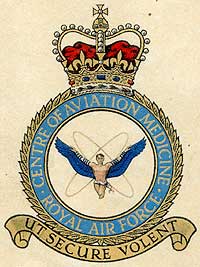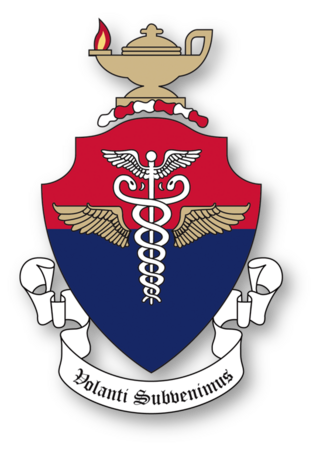
The Federal Aviation Administration (FAA) is a U.S. federal government agency within the U.S. Department of Transportation which regulates civil aviation in the United States and surrounding international waters. Its powers include air traffic control, certification of personnel and aircraft, setting standards for airports, and protection of U.S. assets during the launch or re-entry of commercial space vehicles, powers over neighboring international waters were delegated to the FAA by authority of the International Civil Aviation Organization.

An aircraft pilot or aviator is a person who controls the flight of an aircraft by operating its directional flight controls. Some other aircrew members, such as navigators or flight engineers, are also considered aviators because they are involved in operating the aircraft's navigation and engine systems. Other aircrew members, such as drone operators, flight attendants, mechanics and ground crew, are not classified as aviators.

A flight surgeon is a military medical officer practicing in the clinical field of aviation medicine, which is also occasionally known as flight surgery.

Chiaki Mukai is a Japanese physician and JAXA astronaut. She was the first Japanese woman in space, the first Japanese citizen to have two spaceflights, and the first Asian woman in space. Both were Space Shuttle missions; her first was STS-65 aboard Space Shuttle Columbia in July 1994, which was a Spacelab mission. Her second spaceflight was STS-95 aboard Space Shuttle Discovery in 1998. In total she has spent 23 days in space.

Aviation medicine, also called flight medicine or aerospace medicine, is a preventive or occupational medicine in which the patients/subjects are pilots, aircrews, or astronauts. The specialty strives to treat or prevent conditions to which aircrews are particularly susceptible, applies medical knowledge to the human factors in aviation and is thus a critical component of aviation safety. A military practitioner of aviation medicine may be called a flight surgeon and a civilian practitioner is an aviation medical examiner. One of the biggest differences between the military and civilian flight doctors is the military flight surgeon's requirement to log flight hours.
An Aviation Medical Examiner or Aero-medical Examiner (AME) is a physician designated by the national aviation authority and given the authority to perform flight physical examinations and issue aviation medical certificates. AMEs are practitioners of aviation medicine, although most are also qualified in other medical specialties.

Hubertus Strughold was a German-born physiologist and medical researcher. Beginning in 1935 he served as chief of aeromedical research for Hermann Göring's Ministry of Aviation and later held the same position with the German Luftwaffe throughout World War II. In 1947 he was brought to the United States as part of Operation Paperclip and went on to serve in a number of high-level scientific posts with the US Air Force and NASA.
The Journal of the Royal Society of Medicine is a peer-reviewed medical journal. It is the flagship journal of the Royal Society of Medicine with full editorial independence. Its continuous publication history dates back to 1809. Since July 2005 the editor-in-chief is Kamran Abbasi, who succeeded Robin Fox who was editor for almost 10 years.
Aerospace Medicine and Human Performance (AMHP) is a peer-reviewed scientific journal in the field of aviation and aerospace medicine. It was founded as the Journal of Aviation Medicine in 1930 by Louis H. Bauer, M.D., and is published monthly by the Aerospace Medical Association.
In aviation medicine, the 1% rule is a risk threshold that is applied to the medical fitness of pilots. The 1% rule states that a 1% per annum risk of medical incapacitation is the threshold between acceptable and unacceptable. In other words:
Applying this 1 percent rule would result in an airline pilot being denied a medical certificate if their risk of a medical incapacitation was determined as being greater than 1% during the year.
Louis Hopewell Bauer was an American medical doctor who founded the Aerospace Medical Association in 1929. Bauer was the first medical director of the Aeronautics Branch of the Department of Commerce which became the Federal Aviation Administration (FAA).

The RAF Centre of Aviation Medicine is a medical organisation run by the Royal Air Force and based at RAF Henlow in Bedfordshire. It is the main organisation conducting aviation medicine research in the UK.
Mike Monroney Aeronautical Center is a regional office of the United States Federal Aviation Administration on the grounds of Will Rogers Airport in Oklahoma City. With around 7,500 direct federal employees, the Aeronautical Center is one of the Department of Transportation's largest facilities outside the Washington, DC area, and one of the 10 largest employers in the Oklahoma City metropolitan area. It is named for Senator Mike Monroney of Oklahoma, who wrote and sponsored the Federal Aviation Act of 1958.

Civil Aerospace Medical Institute (CAMI) is the medical certification, education, research, and occupational medicine wing of the Office of Aerospace Medicine (AAM) under the auspices of the Federal Aviation Administration Office of Aviation Safety. The Institute's primary goal is to enhance aviation safety.
Michael Trudgill MSc MB BCh MRCGP Dip IMC RCS(Ed) DAvMed DOccMed FAsMA FRAeS is the Chief Medical Officer (CMO) for the UK Civil Aviation Authority. Previously Trudgill was a British Senior Medical Officer and Officer Commanding for the Aircrew Equipment Integration Group at the RAF Centre of Aviation Medicine, a former serving Wing Commander in the Royal Air Force, a recipient of the Richard Fox-Linton Memorial Prize in 2005, the Astra Zeneca Prize for Occupational Medicine in 2006, the MOD Chief Scientific Adviser’s Commendation in 2010 and, in 2012, received international awards being made a Fellow of the Aerospace Medical Association and receiving the John Paul Stapp Award for his outstanding contribution to aviation medicine.

The United States Air Force School of Aerospace Medicine (USAFSAM) is the United States Air Force (USAF) organization focused on education, research, and operational consultation in aerospace and operational medicine. USAFSAM was founded in 1918 to conduct research into the medical and physiologic domains related to human flight, and as a school for medical officers trained to support military aviation operations, later coined as flight surgeons. The school supported early military aviation from World War I through the evolution of aviation and into the modern era. USAFSAM conducted medical research and provided medical support for the initial US space operations beginning in 1947 through the establishment of NASA in 1958. After the creation of NASA, USAFSAM continued to actively support civilian and military manned space missions through clinical and physiologic research. USAFSAM is one of the oldest continually operating school for flight surgeons and other operational medical personnel of its kind in the world. USAFSAM is located in Dayton, Ohio at Wright-Patterson Air Force Base, and is part of the 711th Human Performance Wing and the Air Force Research Laboratory (AFRL).

Alice Mary Stoll was an American biophysicist who developed fire-resistant fabric. She was a pioneer in aerospace medicine. She received the Achievement Award from the Society of Women Engineers in 1969.
Jarnail Singh was a Singaporean physician who focused on aviation medicine. He was known for coordinating the aviation community's response to the severe acute respiratory syndrome (SARS) epidemic outbreak in 2003 and had led the International Civil Aviation Organization's anti-SARS projects for impacted states, studying the spread of communicable diseases via air travel. He also led health studies on pilot fatigue on ultra long-haul flights. He was the chairman of the Civil Aviation Authority of Singapore's Medical Board and the first Asian president of the International Academy of Aviation and Space Medicine.

Wilderness & Environmental Medicine is a quarterly peer-reviewed medical journal covering wilderness medicine. It is the official journal of the Wilderness Medical Society and published its Wilderness Medical Society Clinical Practice Guidelines. The journal is published by Elsevier and the editor-in-chief is William D. Binder.

Captain (Dr.) Julian Ward, MD was an American physician who made contributions to aerospace medicine and the Mercury space program.










